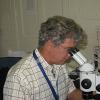-
Posts
94 -
Joined
-
Last visited
-
Days Won
1
Content Type
Profiles
Forums
Gallery
Posts posted by Tony Gill
-
-
All the flavirostris i have seen in sg were all 5 inches plate-sized fish. They dont feed well and will break down overtime.
I am surprised you are telling me tiny ones like 1" are easy and available!! I wonder why the collectors do not catch small ones and always send us plate-sized fish.
May i know at what depth did you collect your tiny flavirostris? Are they locally abundant?
I think the reason small ones aren't exported is that they don't travel well. The main problem is that they need frequent feeding, which isn't possible during transport. Chaetodon flavirostris is one of the commonest "tropical vistors" along the central coast of NSW. (The other common species are C. auriga, C. vagabundus, C. guentheri, C. klenii, C. citrinellus and C. lunula - though there are other less common Chaetodon species as well.) These species turn up each year around late January with the East Australian Current. Most die off in winter (around June) as the sea temperatues get lower, but C. guentheri is a resident species, and C. flavirostris may survive a winter to reach near adult size on the central coast (area immediately north of Sydney). A little farther north (Port Stephens and farther north), C. flavirostris is a resident species. Juvenile flavirostris can be found in just a few feet of water, usually in the lower reaches of estuaries or in sheltered coastal bays. There were several in a large "rockpool" (actually just section of scattered boulders and reef alongside a rock platform that gets almost closed off to the sea at low tide) on the coast not far from my house this season (along with several C. auriga, two C. lunula and a C. vagabundus). When I last saw them a few weeks ago they were around 30 mm in length.
-
I would say these are not ephippiata, Though it would be interesting to know exactly where these specimens came from. Could these be a hybrid of ephippiata/paccagnellae? Or are these even legitimate species? This whole group of dottybacks could use some extensive genetic testing.
Here's a photo of ephippiata by Dr Randall, taken from Allen & Erdmann 2012. The yellow saddle is much reduced and more sharply defined. "Ephippium" is Greek for "saddle cloth".

Sorry about the delay in responding on this. Yes, I agree they do not appear to be P. ephippiatus, and I would instead identify them as P. diadema. I have seen a huge range of variation in the latter species, from specimens with extensive purple coverage as in the photos, to more-or-less straight yellow ones. I base my identifications on such specimens partly because of where they come from (within the range of P. diadema). However, OldTownJoe is correct in saying that there is a need for more detailed study of Pictichromis. It is indeed possible that P. ephippiatus is a hybrid between P. porphyrea and P. "paccagnellae", though at the time I described the species I felt that was unlikely because multiple specimens of different sizes were observed at the type locality. That aside, there is also the tricky problem of whether P. dinah is really a good species ... and if so what it should be called. There are two problems: the coloration differences that supposedly separate P. dinah from P. paccagnellae are within the range of variation shown by P. paccagnellae from throughout its range; secondly, Axelrod's original description of P. paccagnellae was based on aquarium specimens from Indonesia with no detailed locality, so it's possible they are actually conspecific with P. dinah rather than P. "paccagnellae." On top of all this, my morphological studies suggested that P. paccagnellae from the eastern part of the range (Solomons, Vanuatu, New Guinea) are distinct from those from Indonesia and the NW Shelf of Australia.
-
Yes its under callogobius. . But can't find the name for this... or is it an indescribable species?
I can't add any more than Naomi had said in her message. She would need to see additional details under a microscope to determine the species.
-
I find it interesting that C. flavirostris is considered a difficult species. I've kept it frequently in the past (I think it may have been the first butterfly species I ever kept), and found it relatively undemanding. However, I have always started with small (0.5-1.5 inch) individuals that I collected locally. Larger fish can be more difficult to get eating. Unfortunately small ones don't transport well ... which obviously hasn't been a problem for me.
Tony
-
I heard back from Naomi: "I'm pretty sure that species belongs to a complex of small, hasseltii-like Callogobius that include C. sheni and a bunch of undescribed species. I wouldn't be able to tell more specifically without looking at it under the [micro]scope."
-
Callogobius - perhaps C. stellatus. Species in this genus are pretty confused, and there are a number of undescribed species out there as well. Naomi Delventhal has just finished revising the genus for her PhD. I'll drop her a line to see if she can give a more definite identification.
-
Pseudoplesiops Collare at Dejong!!
It's a bit hard to tell from this photo, but it looks like it might be the undescribed Pseudoplesiops from Cebu. Any idea where it was collected?
-
You should perhaps consider some of the dartfishes in the genus Ptereleotris, as most form schools. Aside from Chromis, I've found Neopomacentrus species good in schools (and not at all aggressive). Another relatively peaceful damsel to consider is Lepidozygus tapeinosoma - though perhaps not an easy one to come by. (I've mostly seen it offered for sale as a Pseudanthias!)
Tony
-
Gnathophyllum circellum from Mexico.. Same as most bumblebee that eats feets of urchin..
Many years ago, I kept a pair of Gnathophyllum that I caught locally near Sydney. I suspect they were G. taylori, which at the time was not described. They were in a tank by themselves, but I ended up having to add a dottyback (Oxycercichthys veliferus) and couldn't find the shrimp to move them on to a different tank. Dottybacks are notorious shrimp predators, so I assumed I would never see the shrimp again. Months later, however, I was surprised to find the pair holed up in the dottyback's cave. The dottyback was ignoring them. I never followed it up to see why the dottyback didn't eat them, but suspect they are either toxic, or perhaps act as parasite cleaners.
-
 1
1
-
-
I think with some of the species, you could go a couple of degrees higher than 20oC. Trachinops taeniatus, Enoplosus armatus, Cleidopus gloriamaris and Chelmonops truncatus all range up into southern Queensland (though only just for some!) ... so are warm temperate to subtropical species. Water temps in my area (on the central coast of New South Wales, just north of Sydney) range from about 17-26oC. The temps are highest between about January and May, when a lot of juveniles of tropical species turn up (carried down as larvae on the East Australian Current).
Tony
-
I kept Pseudanthias species many years ago (back in the early 80s). I had trouble getting them to take food (I tried various small crustaceans, including brine shrimp and mysids), but then found an article that listed fish eggs and larvae as a significant component of the diet of some species. I offered mine some fish embryos that I dissected from pregnant Gambusia holbrooki (a livebearing freshwater fish introduced to Australia from the USA to control mosquitoes, but now a noxious pest species). They immediately gobbled them up, and rapidly put on weight, allowing time for me to train them to take other foods.
Tony
-
dr gill,
i need your assistance. is this Parioglossus winterbottomi? collected in mudflats of India, bengal. i can't even find holotype pics of this fish anywhere.
it looks almost like a FW fish.
Sorry, I only just noticed your post. Seems like you have now confirmed its identification without my help! That's a very nice fish. I have kept P. marginalis in a brackish water tank, though they will also do well in freshwater. Interesting that the Bengal Parioglossus is named after Rick Winterbottom. He once told me that no one ever named species after him ... he now has 11 (two of which I named)!
-
Hi bro n sis....
Can help me identify wat fish is tis???
Shld b in e benny family type rite???

It's a bit hard to tell from the photo, but I'm guessing it's Enchelyurus flavipes.
-
I dun think this one below is a flammicauda.
Flammicauda pics
So if u compare the weird dottyback above has different yellow pattern at both the caudal n head. Also the body and finnage shapes are also different. The one right above has more of a steenei shape than flammicauda. But i do not know what the first dottyback is either, cant find any similar in fishbase.
The unknown is Pseudochromis dilectus.
-
Koji is sending these to U.S next week.
the list is strange and consists of a baby modestus butterfly (highly desirable size), large interrupta angels, an auripes butterfly, a golden hawk.
i don't know what the striped fish is and the filefish. digi, terry, care to help?
The striped fish is Oplegnathus fasciatus. Not sure on the filefish, but perhaps Paramonacanthus pusillus.
-
not sure of the id.
i think Halichoeres salmofasciatus.
No, not a Halichoeres ... note the small scales. It's Coris dorsomacula.
-
Deepwater Lubbockicthys sp. collected in Yap islands, Micronesia, at a depth of 180 feet.
See http://www.cabrillo.edu/~ncrane/ES%2010/Ulithi/Yap%20REA%20Fish%20Final%20Report.pdf for report.
I have material of this species (which is indeed an undescribed Lubbockichthys) from lots of localities throughout the western Pacific. It actually gets fairly shallow (around 15 m or so).
-
Submarine caught fish in Curacao
Malthopsis gnoma (Grotesque Batfish, 2") from 760 feet
Lipogramma sp (< 1") from 600 to 800 feet
This is how an adult of the above fish looks like
Hmm, it's been a long while since I loked at Lipogramma, but this one looks new to me. I found similar photos on other websites identified as L. robinsi, but that species has more 10-12 narrow bars on the body. See: ftp://ftp.fao.org/docrep/fao/009/y4161e/y4161e57.pdf
-
Anyone know what is this fish, angel or butterfly?
Chaetodon octofasciatus
-
some kind of sand diver?
Yes, a Trichonotus species. It's hard to identify to species without seeing the fins spread.
-
The blenny is Omobranchus anolius. It occurs along the east coast of Australia, and is one of the commonest blennies in the Sydney area. It's almost always found around oysters, earning it the common name of oyster blenny. Males can get quite spectacular: http://www.fishesofaustralia.net.au/home/species/4742
-
Salarias segmentatus
-
Here's the fish. It looks like a ptereleotris but we can't find a match
I think it is indeed a Ptereleotris, but it doesn't match any species I'm aware of. My guess is that it's a new species. It would be good to get specimens for study, and also to know where they were collected.
-
and what hawkfish is this! it's gorgeous!
This isn't a hawkfish ... it's another triplefin. It looks familiar, but I don't recall the species offhand. It might be a species of Ceratobregma.



Weird looking bone found
in New to the Marine Aquaria Hobby
Posted
I agree with Xiggie ... a catfish skull.